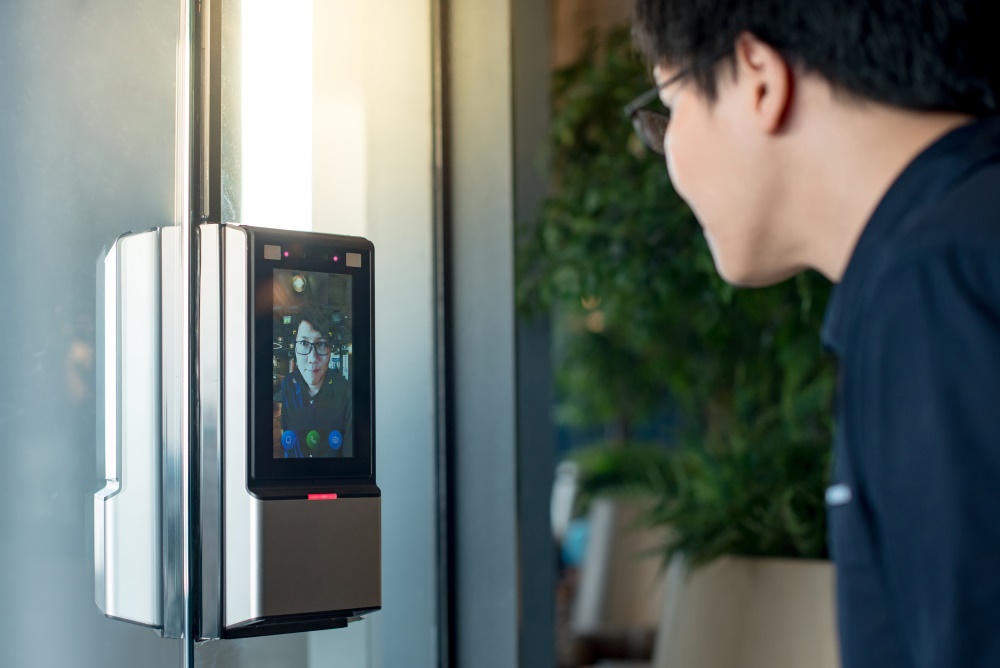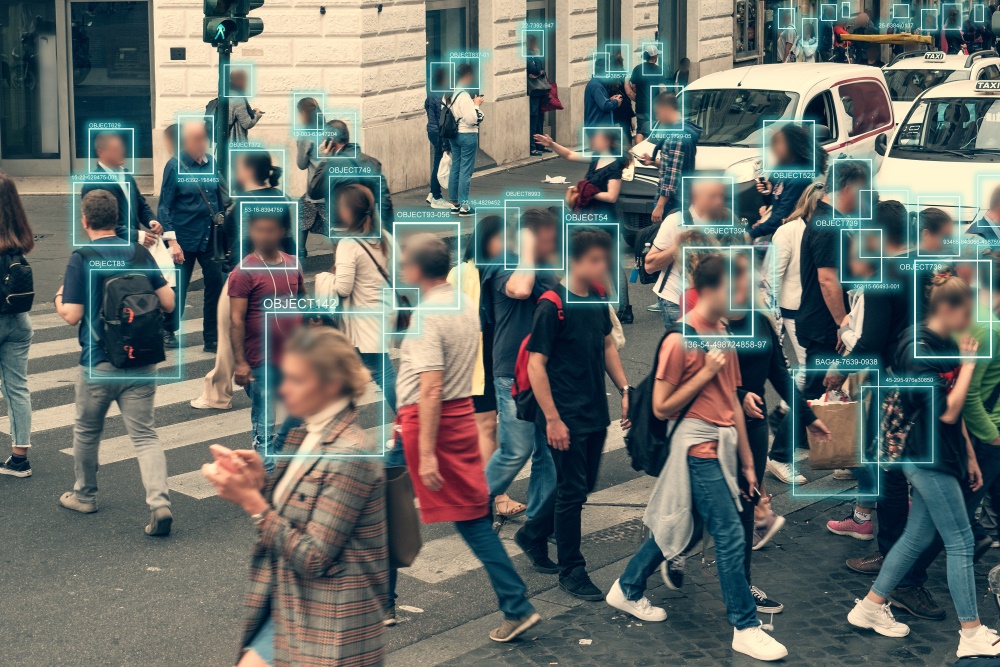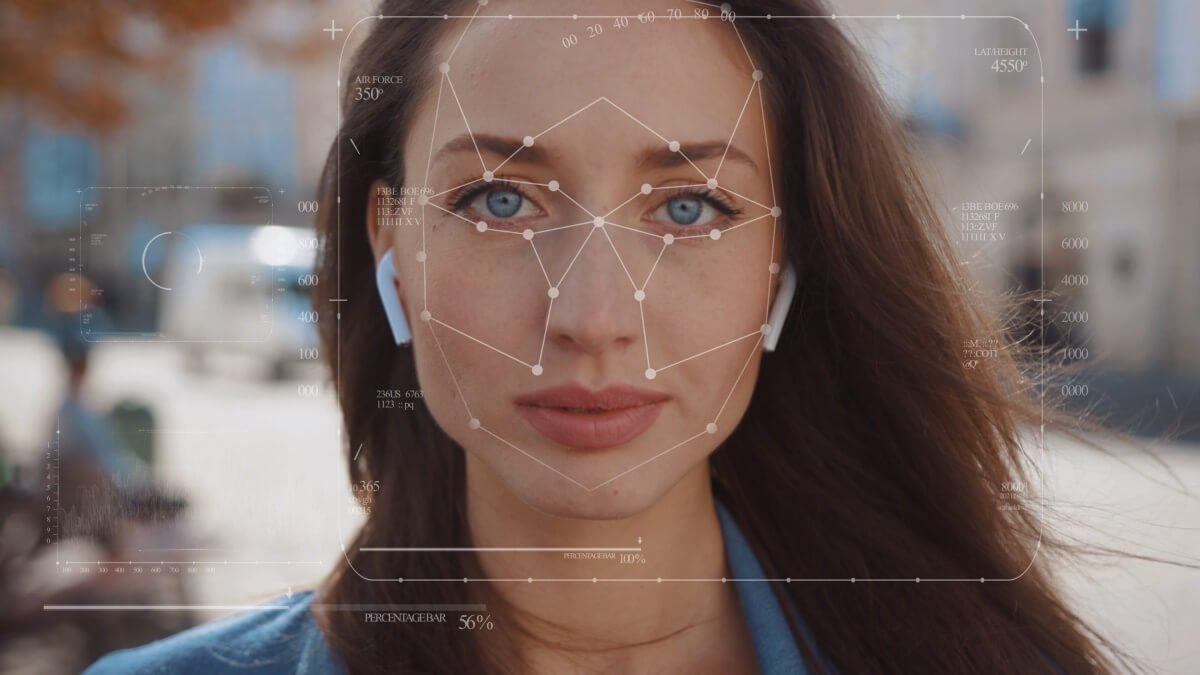Face Recognition has the potential to benefit people and society; however, significant drawbacks with this technology are concerns surrounding privacy.
While there is no doubt that these concerns are valid, we need to be careful of sweeping generalizations.
For example, the specific Face Recognition technology used, how it’s deployed, and what computing method it relies on all play a part in determining how much of a privacy risk it is.
The rise of Face Recognition technology
Imagine that, as you walk through your front door, your HomeCam recognizes your face and instantly adjusts the music, lights, and temperature to your preferred settings. If your housemate or partner gets home before you, the system can adapt to their settings.
On another front, if an individual that your system doesn’t recognize shows up at your house, your smart camera with Face Recognition can send you a notification alerting you that an unknown person is at your property. This person could be delivering a package, or they could be there for nefarious purposes. Either way, your Face Recognition system can let you (or your security company) know instantly.
Today, computer vision and artificial intelligence are cost-effective and sophisticated. Because of this, we’ll see many more devices popping up that utilize Face Recognition technology. And, as the example above illustrates, Face Recognition will become a big part of smart homes.

While the Face Recognition technology built into cameras offers users great personalization and security, there can be a privacy trade-off.
As many people fear, Face Recognition is one of the most powerful surveillance tools ever.
Software is just software, but how individuals, governments, and companies use it can significantly impact society.
Face Recognition can benefit people and society
Let’s turn our attention to the benefits of Face Recognition.
Face Recognition is incredibly useful because it can:
- Offer a highly secure option for entry into homes and businesses.
- Aid law enforcement.
- Secure devices such as phones and laptops.
- Offer fraud protection at ATMs.
- Help with the diagnosis of certain conditions in hospitals.
- Combat human trafficking.
- Assist the low-vision and blind communities.
- Help with event registration.
- Track customer behavior.
- Increase security at airports and border crossings.
- Upgrade the personalization, security, and convenience of everyday things.
This list isn’t all-inclusive either, as more and more innovative uses of Face Recognition technology are continually emerging.
Face Recognition technology is improving rapidly
The widespread adoption of Face Recognition is happening mainly because the technology itself is becoming unbelievably accurate and advanced.
Supported by strong algorithms, Smart Video Doorbells and HomeCams can significantly reduce the number of false alarms sent out to users.
Although finding out that the “unknown person” alert you received was triggered by a tree or changing light, the unnecessary alert can still create a stressful situation for your customer.
Today, false alarms are becoming increasingly unlikely.
On top of this, Face Recognition cameras are becoming so advanced that they’ll be able to recognize a face covered with a mask or sunglasses, increasing their ability to accurately perform the essential, life-saving tasks listed above.
Despite these benefits, those who oppose Face Recognition technologies don’t think the benefits are worth the risk to people’s privacy.
Let’s hear those concerns next.
Face Recognition privacy – the major concerns
Recently, issues surrounding Face Recognition Privacy have become a source of anxiety for many people. This is due mainly to concerns surrounding privacy.
These anxieties are reflected by institutions worldwide that have implemented strict regulations to protect people’s biometric data.
Europe’s General Data Protection Regulation (GDPR) is an example of this. Europe’s GDPR details that citizens are entitled to their privacy and that any breach of privacy will be met with consequences.
These worries about privacy aren’t unreasonable. People don’t like to feel they’re being watched or that personal information could be leaked.
A major concern with security cameras and HomeCams is hacking. For instance, if your camera with Face Recognition was compromised somehow, a hacker might be able to get their hands on identifying information about anyone in that camera’s system.
In addition to this, there’s the issue of what happens to the faces recorded by the camera.
As mentioned before, Face Recognition can be helpful to law enforcement agencies, but police can only access Face Recognition footage with permission from the camera’s owner.
On the other hand, imagine if these faces were sent to the cloud where they could be matched up with technology such as Amazon’s Rekognition software, which can match faces with a massive database. Naturally, this is very worrying.
Despite the disturbing things we’ve mentioned here, the specific Face Recognition technology used, how it is deployed, and what computing method it relies on all play a part in determining how much of a privacy risk it is.
Face Recognition technologies and their deployment matter
Given the concerns about privacy discussed above, we can see how vital it is that Face Recognition technologies are developed and used responsibly and thoughtfully.
Some important guidelines to uphold include:
Fairness
Face Recognition technology shouldn’t amplify or reinforce existing biases, especially where this might impact minority groups.
Ethical use
The technology shouldn’t be used for surveillance that violates internationally accepted laws and norms.
Privacy
Face Recognition needs to protect individuals’ privacy while offering users control and transparency.
In addition to upholding fairness, ethical use, and privacy standards, it’s also important to avoid large generalizations about Face Recognition technology.
For instance, if we’re talking about a Face Recognition device bought and owned by a customer, they’ll be able to turn off Face Recognition or opt-in and out of the system as they see fit. This nullifies the issue of consent and offers the user(s) total control over the software.
The functions that specific Face Recognition technologies perform also matter in how concerned we should be about privacy. For example, face recognition is not the same thing as face detection.
Face detection doesn’t assign an identity to the face it finds in an image. It just means telling whether there’s a face there or not. Likewise, face clustering enables cameras to determine similar groups of faces without individually recognizing or matching an identity to each one.
The way different Face Recognition technologies are deployed is also meaningful here.
Using Face Recognition for authentication is very different from using it for mass identification. There are various things to consider in each of these contexts.
For example, mass identification raises issues around consent where authentication does not. This is because the users typically build their own database of faces and are required to opt in to enable authentication functions on their devices.


Additionally, AI management platforms such as Xailient’s Orchestrait make it easier to collect Face Recognition data in a privacy-compliant way.
Of course, nobody has all the answers to Face Recognition and privacy.
Nonetheless, the functionality and deployment of specific technologies make a difference in determining how concerned we need to be about our privacy.
Face Recognition at the Edge reintroduces privacy
The specific computing method a Face Recognition device uses also plays a role in how much an individual’s privacy is at risk.
Edge computing refers to when computing occurs at, or very close to, the source generating the data.
Data is traditionally processed using a centralized computing method offered through major cloud providers.
If you’re not at the center of a network (as you would be in the case of cloud computing), you’re at the Edge, hence the name Edge computing.
By bringing computation and data storage close to the data source, Edge computing reduces response times and saves bandwidth.
When computing happens close to the data source, it can take place on Edge-enabled devices (such as IoT devices), users’ computers, or Edge servers.
In addition to the latency and bandwidth problems resolved by moving computation to the Edge, keeping data local also remedies privacy concerns regarding Face Recognition. This is because moving data from the client to the cloud can cause privacy and security problems. It can also cause legal issues when there are laws about how far data is allowed to travel.
An example of this is the Health Insurance Portability and Accountability Act (HIPAA). HIPAA states that data must remain in the jurisdiction where it is created to limit peoples’ healthcare data transmission.
Moving data long distances is a problem because if the data is hijacked and winds up in the wrong hands at some point in the transfer process, people’s information could be leaked or used in inappropriate ways.
Edge Face Recognition allows systems to keep data local so that users’ data can remain safe within the area it was generated.
Is there really a privacy concern with Face Recognition?
The short answer is yes.
As discussed above, privacy concerns surrounding Face Recognition technology are absolutely valid.
From surveillance and hacking concerns to issues with how data is stored, Face Recognition can put people’s personally identifiable information at risk in some instances.
However, the better answer would be that the person or organization who owns a Face Recognition device (be it a private homeowner, a business, or a government agency) makes a difference in how concerned we should be about privacy.
Likewise, the functions it performs and why it’s deployed also play a role here, as does whether it relies on Edge or cloud computing.
This isn’t a simple answer, but it’s one that takes into account the nuances surrounding Face Recognition and privacy.



